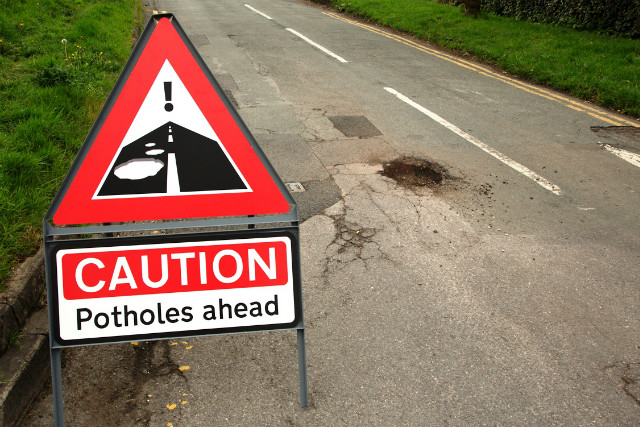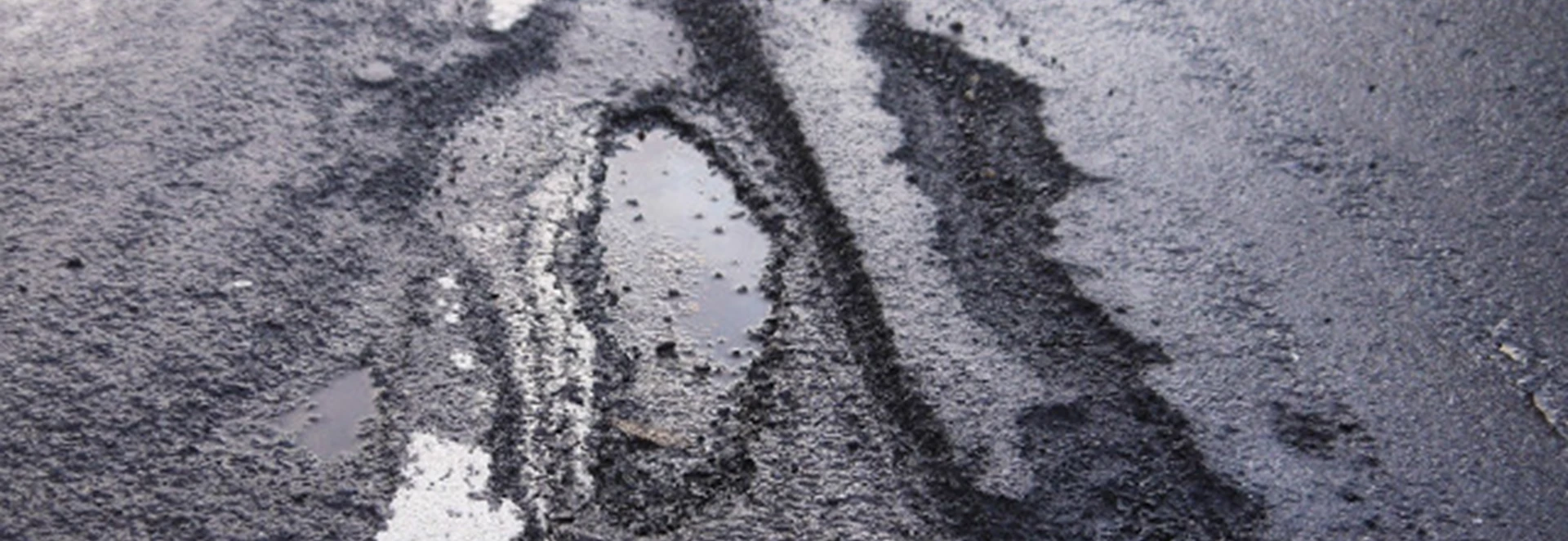Potholes are an issue that blight many of Britain’s roads and cost drivers over a billion pounds in repair bills annually.
In this guide we explain what potholes are, how they can affect your car and what to do if they damage your car.
What are potholes exactly?
Potholes are breaks and holes in the road surface which can form in various ways. Causes can include excessive wear or subsidence, poor maintenance and even winter weather.
During the winter, water can enter potholes and expand them when it freezes, thus breaking up the surface of the road.
What damage can a pothole do?
A pothole is bad news for cars because driving over them can cause a number of problems to a vehicle’s wheel and tyre. The extent of potential damage depends on the car you drive, the size of the pothole, the speed you drive over it and how often you drive over potholes.
The initial impact with a pothole can potentially create cracks on the wheel or even cause it to buckle. Lumps can also form on the tyre or the wheel’s tracking and balancing could be knocked out of place. In the most severe cases, driving over a pothole could lead a driver to lose control of their vehicle.
The damage done to a car’s key components by hitting a pothole or a large number of potholes over time will need fixing at a service garage. If you’re unable to claim for damage caused by a pothole, then motorists could end up spending hundreds of pounds on repairs.
How are potholes dealt with?
There are two ways potholes on roads tend to be filled in. The method which most councils use is filling in the pothole separately, which will make the road surface even again but this can prove only a temporary solution.
It’s possible that the join between the edge of the filled-in pothole and the road can crack and break away, leaving a pothole right where there was one before.
For a more permanent solution, councils could opt to completely resurface the part of the road which has one or several potholes. While this is far more effective than just filling-in a pothole, it is a more expensive process and with councils already concerned with budgetary constraints and a backlog of potholes to fill, a faster and cheaper option tends to be preferred.
If you suspect your car has been damaged by a pothole, get out the car and inspect the wheel and tyre in a safe place. If you notice a severe vibration in your car or if the steering wheel doesn’t centre properly or pulls to one side, then these are other indications that your car has been damaged by potholes.

Can I report a pothole if I see one?
It’s possible to report a pothole sighting via the relevant council’s website. Certain motoring service websites have also set up their own pages dedicated to reporting potholes.
If you want to check which council maintains a particular road, you can enter the name of the road, the town it’s located in or postcode on the Government’s website gov.uk.
What do I do if a pothole damages my car?
It is possible to reclaim the money you spend fixing your car’s damage by contacting the relevant council or highways agency responsible for fixing potholes on the road your car got damaged on.
Preferably you’ll want to gather evidence of the pothole causing damage to your car as soon as you hit it. Provided it’s safe to do so, make notes of where the pothole that damaged your car is located.
Take photographs of the pothole itself, preferably images that accurately reflect its width and depth and if it was difficult to see before driving over it (if it was just past a blind corner, for example). If there were any witnesses that saw your car get damaged by the pothole, getting their contact details can prove very useful.
You’ll want to send the relevant authority a letter about your claim along with the required details (such as place and time) and all the evidence you can gather. Proof of damage and evidence of cost of repairs will be needed too.
My claim has been rejected. What now?
Claims for pothole damage can potentially be rejected under Section 58 of the Highways Act 1980. This states that councils cannot be held responsible if they maintained the road to a reasonable extent.
If your claim is rejected and you think it’s an unfair decision then there’s more you can do. You can download and study the national code of good practice for highway maintenance and ask the council/highways agency how often the relevant road is inspected and maintained under the Freedom of Information Act.
If there are any ways the council’s maintenance programme doesn’t match up to the requirements outlined in the national code, you could submit a new claim which points out these differences. The council may consider making a compensation offer depending on your response but if their programme correlates with the code then you’re unlikely to get anywhere with this.




